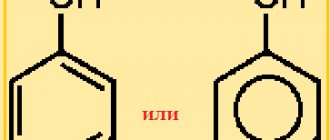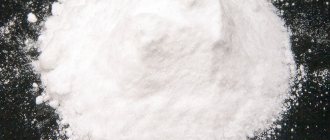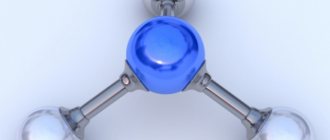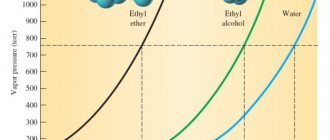Barium sulfate is a substance found in nature as the mineral barite with the formula BaSO4. A natural mineral can be either transparent or white, or colored due to the presence of impurities. The reagent used in industry is a finely dispersed powder, white or with a slight yellowish tint. The purer the substance, the whiter it is.
Barium sulfate is very inert and does not dissolve in water or solvents. Neutral to alkalis and most acids, fireproof, non-toxic. To cause thermal decomposition, it must be heated to +1600 °C. Reacts with concentrated sulfuric acid H2SO4, hydrobromic HBr and hydroiodic HI acids, chlorine water, carbon, hydrogen, sodium hydroxide NaOH.
Composition and release form
Barium sulfate is a powder from which a suspension is prepared for oral or rectal administration. The basic component of the drug is varium sulphate.
The product is a light powder without impurities, without a pronounced smell or taste. The substance is insoluble in water, alkalis, acids and organic solvents.
Barium sulfate is placed in polymer glasses of 100 g each. The product intended for stationary use is located in thick paper boxes of 60, 120, 90 pieces along with an annotation. The packages are marked.
Receipt.
Also on topic:
CHEMISTRY
The main raw materials for the production of barium and its compounds are barite and, less commonly, witherite. By reducing these minerals with coal, coke or natural gas, barium sulfide and barium oxide are obtained, respectively:
BaSO4 + 4C = BaS + 4CO
Also on topic:
RADIUM
BaSO4 + 2CH4 = BaS + 2C + 4H2O
BaCO3 + C = BaO + 2CO
Barium metal is obtained by reducing it with aluminum oxide.
3BaO + 2Al = 3Ba + Al2O3
This process was first carried out by the Russian physical chemist N.N. Beketov. This is how he described his experiments: “I took anhydrous barium oxide and, adding to it a certain amount of barium chloride, like flux, I put this mixture along with pieces of clay (aluminum) in a carbon crucible and heated it for several hours. After cooling the crucible, I found in it a metal alloy of a completely different type and physical properties than clay. This alloy has a coarse-crystalline structure, is very brittle, a fresh fracture has a faint yellowish sheen; analysis showed that for 100 hours it consists of 33.3 barium and 66.7 clay, or, otherwise, for one part of barium it contained two parts of clay...” Currently, the reduction process with aluminum is carried out in a vacuum at temperatures from 1100 to 1250 ° C, while the resulting barium evaporates and condenses on the cooler parts of the reactor.
In addition, barium can be obtained by electrolysis of a molten mixture of barium and calcium chlorides.
Pharmacological properties
Barium sulfate has the formula - BaSO4. The substance is produced by a reaction caused by interaction with hydroxides, barium peroxide or oxide with soluble sulfates or sulfuric acid. Industrially, barium sulfate is made from a natural mineral called barite.
Barii sulfas is a radiopaque substance. The powder is not absorbed from the gastrointestinal tract and does not penetrate into the general bloodstream. Pharmacological action of the substance - the product absorbs X-rays better than other tissues of the body. The substance envelops the inner lining of the gastrointestinal tract, which makes it possible to examine the microrelief of the mucous membrane of the digestive organs.
Chemical properties of barium sulfate - the substance does not dissolve in many acids or alkalis. But the powder dissolves in an aqueous solution of chlorine, alkali metal hydroxides, hydrogen iodide, and hydrogen bromide.
Compared to other agents used in fluoroscopy, Barii sulfas is characterized by low toxicity. The substance enters the small intestine 15-30 minutes after application. The drug appears in the large intestine later. This is determined by hydrostatic pressure, suspension consistency, and body position.
Barii sulfas is not absorbed from the gastrointestinal tract. Contrast of the duodenum, stomach and esophagus occurs almost instantly after oral administration. With anterograde use in the small intestine, the substance appears 15-90 minutes after use; with retrograde filling, depending on body posture, the drug almost immediately appears in the distal parts of the intestine. Elimination through the gastrointestinal tract is observed after 1-2 days.
Where is it used?
The utilitarian characteristics of the metal (ductility, malleability, toughness) ensured its demand among industrialists and scientists. More often these are compounds and alloys than pure metal. Area of use - from nuclear power plants to fireworks displays.
Atom, chemistry
The material is in demand in serious industries:
- Current sources (chemical) . Fluoride is a component of the electrolyte in fluorionic batteries, oxide in copper batteries, and sulfate in lead-acid batteries.
- Superconductors. A mixture of oxides of barium, copper, and rare earth elements is an ingredient in the production of superconductor ceramics.
- Atomic industry . The oxide is added to the glass lining of the uranium rods.
It is a component of the “shield” of X-ray and nuclear installations. This is how the metal’s ability to attract x-rays and gamma rays is used.
Other industries
Metals and alloys (especially with aluminum) have found application in the civilian segment:
- Gas “absorber” in high-vacuum electronics.
- Additive (with zirconium) to coolant fluids to increase the corrosion threshold (pipelines, metallurgical equipment).
- In metallurgy, it is a deoxidizer, a purifier of copper and lead from impurities.
- Fluoride is the basis of lenses, prisms, and other optical products.
- Barium-nickel alloy is the material of electrodes for engine spark plugs.
Barium in a test tube
Compounds of the element are in great demand:
- Peroxide. Source of bleach for silkworm fibers, cotton, wool. Disinfector.
- Sulfide. Destroyer of hair from animal skins.
- Perchlorate. Top dehumidifier.
- Chromate, manganate. Yellow and green pigments in paint and varnish production.
Nitrate and chlorate create the green lights of fireworks and other pyrotechnic spectacles.
Non-industrial segment
Carbonate kills rodents.
Sulfate is in demand in medicine. It is non-toxic and is used as a contrast material in gastrointestinal examinations.
Indications and contraindications for use
The use of barium sulfate is indicated for fluoroscopy of the gastrointestinal tract (intestines, stomach, esophagus) and pharynx. The substance can be used in the double contrast technique.
Barium sulfate – contraindications:
- Bronchial asthma
- Dehydration
- The presence of damage to the mucous membranes of the gastrointestinal tract
- Hypersensitivity
- Cystic fibrosis
- Diverticulitis
- Bleeding
- Ulcerative colitis
- Tendency to allergies
- Dysphagia
- Intestinal obstruction.
The use of the product during pregnancy is undesirable. If you need to perform fluoroscopy during lactation, then it is advisable to stop feeding for a day. It is not advisable to eat solid food during the study. After diagnosis, you should drink plenty of water to stimulate the excretion of barium sulfate.
How to calculate the molar mass of barium sulfate?
Now that the concept of molar mass has been discussed, we can move directly to the topic of the article. As can be understood from the previous paragraph, in order to calculate the mass of 1 mole of the salt in question, you need to know how much one molecule weighs, that is, BaSO4.
According to the chemical formula, the molecule in question consists of one barium atom, one sulfur atom and four oxygen atoms. The idea of calculating its mass is to sum up the atomic masses of the corresponding elements. The necessary data can be found in the periodic table of D.I. Mendeleev.
Instructions for use
The cost of the powder is from 20 rubles.
For fluoroscopy of the esophagus (tight filling), 5-150 ml of a suspension having a concentration of 40-75% is used. The drug is taken orally. In the case of using the double contrast technique, 15-140 ml of the drug is used (40-85%).
The required amount of barium sulfate (tight filling) for fluoroscopy of the duodenum and stomach is 240-360 ml. A suspension having a concentration of 30-60% is administered orally.
Other methods of using barium sulfate:
- Retrograde diagnosis of the large intestine - the drug (15-30%) is used rectally in an amount of 1.5-2.5 liters. If double contrast is used, then the drug (50-65%) is administered rectally in an amount of 350-1000 ml
- Computed tomography – Barii sulfas can be used rectally or internally in an amount of 200-500 ml and a concentration of 1-2%
- Diagnostics of the small intestine - the product is used with tight filling in an amount of 480-700 ml and a concentration of 30-50%. The drug can be administered through a nasoduodenal tube in a concentration of 20-35% and in a volume of 500-2400 l. With the retrograde method, barium sulfate is used rectally in a concentration of 17% and a volume of up to 2.5 liters.
Before rectal administration, you must eat soft food. Before diagnosis, Bisacodyl is administered in the form of suppositories in the morning.
If the patient has constipation, then during the period of preparation for fluoroscopy of the stomach and small intestine, a cleansing enema is performed in the evening and in the morning, 2 hours before diagnosis. On the day of the study, smoking and drinking alcohol are prohibited.
Side effects, overdose, interactions
The use of barium sulfate can negatively affect the functioning of the digestive organs, which is manifested by constipation and barium appendicitis. If gas-forming drugs are used with double contrast, then epigastric discomfort is likely to occur. It is also possible to develop allergies in the form of rashes and hives.
An overdose of barium sulfate is practically impossible. After all, the drug is not absorbed into the general bloodstream and, after diagnosis, is excreted from the body in full.
Drug interactions Barii sulfas is biologically inert, so the substance combines normally with other medications. But the presence of a suspension in the gastrointestinal tract may affect the absorption of other drugs.
Analogs
Barium sulfate substitutes - Bar-Vips and Adsobar.
Bar-Vips
Manufacturer – Vips-Med, Russia
Price – from 110 rubles
Description – the powder from which the suspension is prepared is used for x-ray examination of the digestive organs. In this case, conventional diagnostics or double contrast is used
Pros - the drug has low toxicity, the powder is not absorbed into the general bloodstream, the suspension has good X-ray contrast characteristics
Disadvantages - cannot be used in children; after use, allergic reactions often develop and discomfort occurs in the epigastric zone.
Adsobar
Manufacturer – Pharmzaschita NPC FMBA/Moskhimfarmpreparaty, Russia
Price – from 100 rubles
Description – the powder is used for fluoroscopy of the digestive organs, including the double contrast technique
Pros – makes diagnostic testing more informative, has low toxicity, does not penetrate into the systemic circulation
Disadvantages - after using the suspension, allergies and unpleasant symptoms from the gastrointestinal tract occur, there are contraindications, it can affect the absorption of other drugs.
History of discovery.
Also on topic:
BARITE
In 1602, Casciarolo (Bolognese shoemaker and alchemist) picked up a stone in the surrounding mountains that was so heavy that Casciarolo suspected it was gold. Trying to isolate gold from a stone, the alchemist calcined it with coal. Although it was not possible to isolate gold, the experiment brought clearly encouraging results: the cooled calcination product glowed reddish in the dark. The news of such an unusual find created a real sensation in the alchemical community and the unusual mineral, which received a number of names - sunstone (Lapis solaris), Bolognese stone (Lapis Boloniensis), Bolognese phosphorus (Phosphorum Boloniensis) became a participant in various experiments. But time passed, and gold did not even think of standing out, so interest in the new mineral gradually disappeared, and for a long time it was considered a modified form of gypsum or lime. Only a century and a half later, in 1774, the famous Swedish chemists Karl Scheele and Johan Hahn carefully studied the “Bologna stone” and found that it contained some kind of “heavy earth”. Later, in 1779, Guiton de Morveau named this “land” barote (from the Greek word “barue” - heavy), and later changed the name to baryte (baryte). Under this name, barium earth appeared in chemistry textbooks of the late 18th and early 19th centuries. For example, in the textbook by A.L. Lavoisier (1789), barite is included in the list of salt-forming earthy simple bodies, and another name for barite is given - “heavy earth” (terre pesante, Latin terra ponderosa). The still unknown metal contained in the mineral began to be called barium (Latin - Barium). In Russian literature of the 19th century. The names barite and barium were also used. The next known barium mineral was natural barium carbonate, discovered in 1782 by Withering and later named witherite in his honor. Barium metal was first prepared by Englishman Humphry Davy in 1808 by electrolysis of wet barium hydroxide with a mercury cathode and subsequent evaporation of mercury from barium amalgam. It should be noted that in the same 1808, somewhat earlier than Davy, barium amalgam was obtained by the Swedish chemist Jens Berzelius. Despite its name, barium turned out to be a relatively light metal with a density of 3.78 g/cm3, so in 1816 the English chemist Clark proposed rejecting the name “barium” on the grounds that if barium earth (barium oxide) is indeed heavier than other earths ( oxides), then the metal, on the contrary, is lighter than other metals. Clark wanted to name this element plutonium in honor of the ancient Roman god, ruler of the underground kingdom of Pluto, but this proposal did not meet with support from other scientists and the light metal continued to be called “heavy.”









